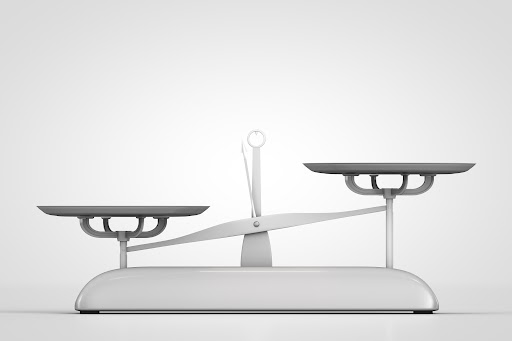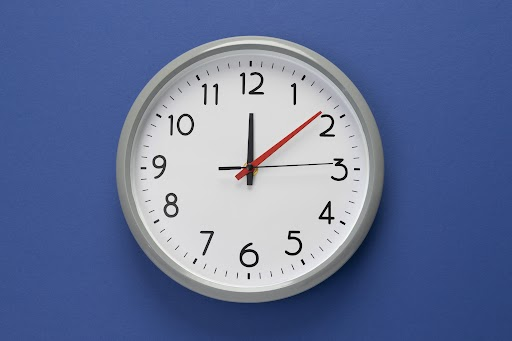Children generally begin learning about measurement by comparing objects or asking questions like “Which one is shorter?”, “Which is taller?” or “Which is bigger?” These questions introduce them to the idea of quantifying an object’s characteristics to determine its standard unit of measurement. Additionally, these questions naturally emerge as your child starts exploring and interacting with the world around them. In this article, we will delve deeper into understanding measurement, from its meaning to types of measurement.
What is Measurement?
Measurement is a system used to measure things like the height, weight, and even amount of certain objects. It is through measurement that we can find answers to questions like, ‘How tall is this Giraffe?’
Moreover, we need to use a standard unit of measurement to help us express physical quantity. A classic example of this would be employing the use of ‘inches’ while measuring the length of something. Like, say, a Matchbox.
Since we make effective use of these ‘Units’ when it comes to measuring things, it becomes essential that we use the same units of measurement when comparing different things.
Understanding the Uses of Measurement
By learning measurement, children can accurately and consistently characterise the environment they live and work in. They can differentiate between differences in sizes, distances, temperatures, and more even before they are taught how to measure in standard units, such as inches on a ruler.
A useful strategy to assist kids in comprehending various dimensions is to introduce them to measurement vocabulary. Encourage kids to use adjectives like tall, short, big, little, warm, cool, far, close, and more to describe people, things, or locations. Children will be able to compare (“taller than me”) and eventually utilise conventional units of measurement (“this weighs 2 kgs”) as their measurement skills advance.
In this blog piece, you will find yourself privy to all things Measurement-related. You will gain a basic understanding of Measurement Types, as well as an insight into units of measurement for kids.
Types Of Measurement
Now that you know what measurement is, let’s look at different types of measurement. Depending on what we are looking to quantify, there are different measurement types. For instance, you can use units like seconds, minutes, hours, days, and weeks to measure time. Similarly, you can use grams and kilograms to measure the object’s weight. Let’s have a closer look at the types of measurements.
- Length
- Units – Meter, Millimeter, Kilometer
- Use – To measure the distance between two points or objects
- Measurement Instrument – Ruler, Measuring Tape, and Stadiometer (for Height)
- Example – Length of a Book.
- Weight
- Units – Gram, MilliGram, KiloGram
- Use – To know how heavy an object is
- Measurement Instrument – Weighing machine
- Example – Weight of 6 apples
- Time
- Units – Second, Minute, Hour
- Use – To measure the duration between two events
- Measurement Instrument – Clock
- Example – Time taken between breakfast and Lunch
- Temperature
- Units – Celsius, Fahrenheit
- Use – To know the level of hotness or coldness of an object
- Measurement Instrument – Thermometer
- Example – Temperature of your body
- Capacity
- Units – Milliliter, Liter
- Use – To measure the quantity a container can hold
- Instrument – Measuring Flask
- Example – Capacity of your Water bottle
This is one of the most common types of measurement. It is loosely defined as ‘The distance of an object from one end to the other.’
A classic example of length measurement would be using a ruler. We begin by placing the zero mark of the ruler, at one end of the object. The item being measured is kept parallel to the edge of the ruler. The object’s length is ascertained by recording the reading on the ruler that marks the end of the object’s other side.


In scientific terms, the weight of an object is the force exerted on it by gravity. Simply put, weight is the measure of how ‘Bulky’ an object is. Of course, we don’t quite wish to know how bulky ‘we’ might be ourselves, but there are plenty of other things whose weight we need to measure. Like our bags when we are travelling.


While time might not be so clearly defined, it is the one thing we are all looking to measure at some point simply because the time spent will never return!
One way we can describe time is the flow of events from the past to the present and, subsequently, into the future.

The hotness or coldness of an object can be determined by its temperature. We measure temperature using different units like Celsius, Fahrenheit, and Kelvin. To measure temperature accurately, we rely on a device called a thermometer. In the United States, Fahrenheit is the most commonly used unit for temperature measurement.

The ability to hold or store can be referred to as capacity. This metric is, in general, used to measure the liquids.
What Are the Units of Measurement?
In the olden days, people had to invent their own ‘Standard Units of Measurement’, in an attempt to measure the things around them.
When teaching units of measurement for kids, we must understand some of the most common measurement systems that are widely employed in today’s day and age.
There are two types of Measuring Systems used widely: the imperial system and the metric system. Let’s have a closer look at these measuring systems.
- Metric System
- The Imperial System
When it comes to measuring systems, this one is the most commonly used. Right from their earliest school lessons, children learn how to use metric units. These are commonly used in measuring things like Mass, Length, and even Time. Here are some measure units that form an intrinsic part of the metric system of measurement:
|
Capacity |
|
Length |
|
Mass |
The Imperial System of Measurement, officially established in the UK by the Weights and Measures Act of 1824, includes units like inches, pounds, gallons, and miles, which were commonly used in Britain and its former colonies. Key units in this system for length and distance include inches (in), feet (ft), kilometers (km), and meters(m), while for mass and weight, it uses grams (g), kilograms (kg), and tonnes (t).
|
Capacity |
|
Length |
|
Mass |
|
Time |
|
Temperature |
What are the Different Scales of Measurement?
The term ‘Measuring Scale’ is indeed a broad one. It can be used to refer to the scale you step on in the morning, fervently hoping you’ve lost a kilo since last evening. It might be that ‘ruler’ we touched upon earlier, to measure the length of an object.
It could also be the different scales of measurement that the data being measured might fall into.
- Nominal Scale
- Ordinal Scale
- Interval Scale
- Ratio Scale
Here, the numbers serve as a ‘tag’, in an attempt to classify objects.
Example: When answering the question, what is your Gender?
The options given are:
– Male
– Female
In this instance, the answer is either M or F.
In this, the data that is collected is ordered and ranked, without establishing the degree of variation between them.
Example: In determining the frequency of how often you eat out.
– Very often
– Often
– Not often
– Not at all
In this, the difference between two variables of measurement has some Meaning.
Note: This is the preferred scale in Statistics, as it helps to assign any numerical value to arbitrary assessments like ‘Feelings.’
Example:
– Likert Scale
– Bipolar Matrix Table
This quantitative scale helps researchers compare ‘Differences’ or ’Intervals.’
Example: In answering the one question you don’t wish to answer.
What is your Weight?
– Less than 70 kgs
– 70- 85 kg
– 86-100 kgs
– More than 100 kgs
Types of Measurement Instruments
Measurement instruments are essential tools used to quantify different physical properties. Each instrument is designed to measure a specific type of quantity, and they vary in their construction and usage. For example:
- Measuring Tape: A flexible tool primarily used to measure lengths, distances, or circumferences. It is often marked with units such as inches, centimeters, or meters, and is commonly used in both construction and everyday tasks like measuring furniture or spaces.
- Weighing Machine: A device used to determine the weight of an object. It works by balancing the object against a known standard, and the most common types include digital and analog scales. These are used in settings like homes, supermarkets, and laboratories.
- Pendulum Clock: A traditional timekeeping device that uses a swinging pendulum to regulate the movement of the clock’s hands. The pendulum’s motion is precise, making it historically significant in time measurement before the invention of more modern clocks. It is commonly found in classic and antique timepieces.
We at EuroKids believe that you should start teaching the children about Measurement. The best part is that it’s easy and fun to incorporate measuring activities into the daily lives of children. If you are looking for ways to introduce Mathematics to your little one, check out our blog, How To Introduce Maths To Your Toddler, for ideas.
If you want more insightful and fun articles on your baby’s growth, health, and learning, check out EuroKids blog. Also, discover how EuroKids Preschools provide a safe and nurturing environment for little ones.
















